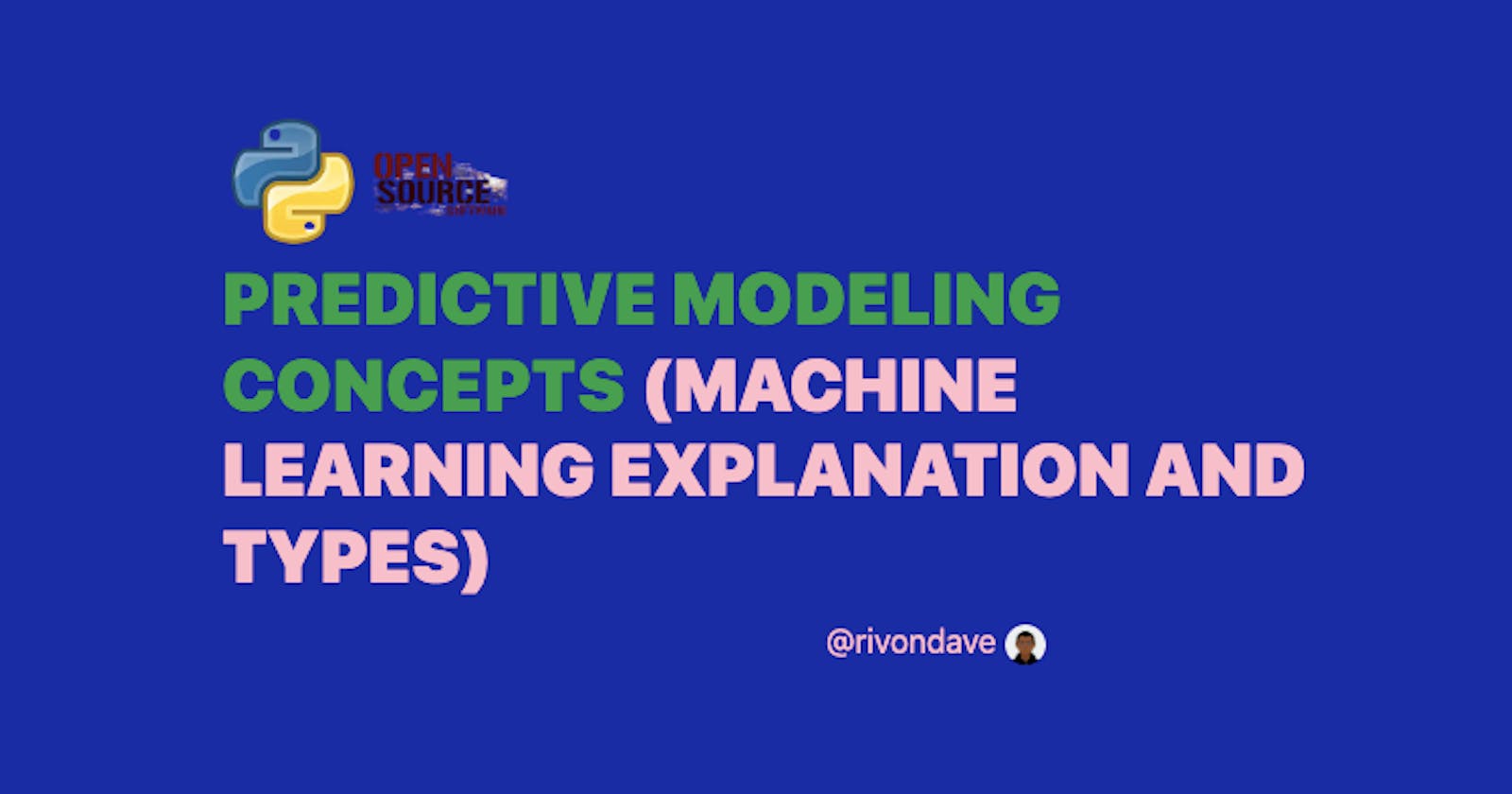In the previous article on predictive modeling, we talked about independent and dependent variables.
In case you missed the article, get it here.
From the last article, we understood that "a model uses the independent variables to predict a possible dependent variable."
Well, this article covers the different techniques a machine learning model uses on independent variables (features) to predict a possible dependent variable (outcome).
First, what is Machine Learning?
Machine learning is a tool that automates predictive modeling by generating training algorithms to look for patterns and behaviors in data without explicitly being told what to look for.
There are four types of machine learning (predictive modeling);
Supervised Machine Learning
Unsupervised Machine Learning
Self-Supervised Machine Learning
Reinforcement Learning
SUPERVISED MACHINE LEARNING
This involves the process of using labeled data to train a machine-learning algorithm.
Earlier we understood the main goal of machine learning is all about understanding patterns in our independent variables to predict possible dependent variables.
In the case of supervised ml, our independent variables are labeled, i.e each variable is tagged with its name.
EXAMPLE
Let's take an instance of a human baby and her family dog

Telling the baby that this pet is a dog makes the baby know that it is a dog
The above is an example of supervised learning because the baby was told what a dog is.
Telling the baby is similar to passing labeled data to our model.
In this case, when the baby/model sees a dog other than the one it was trained on, it can identify it.
Points to note
- Supervised machine learning requires human intervention
UNSUPERVISED MACHINE LEARNING
This involves the process whereby we pass unlabeled data to our model, this technique allows the model to understand patterns between these data and categorize them into classes, clusters and segments.
EXAMPLE
Using our dog and baby example as shown above, assuming no one intervened and told her it was a dog.
The baby knows and identifies this dog.
A few weeks later, a family friend brings along a dog and tries to play with the baby.

Baby does not know this dog. But Baby recognizes some familiar features (2 ears, eyes, walking on 4 legs) are like her pet dog.
She identifies the new animal as a dog.
This is unsupervised learning, where you are not taught but you learn from the data (in this case data about a dog)
Points to note
- No human intervention is required
SELF-SUPERVISED MACHINE LEARNING
This involves the process where we pass unlabeled data to our model and it supervises itself (automatically generates labels), which means if a picture of a dog is passed to a self-supervised ml model it generates the label dog by itself.
Simply visualize self-supervised as supervised learning, then replace all human intervention with self.
EXAMPLE
Speech recognition is an example of self-supervised machine learning.
Points to note
- No human intervention is required, all possible human interventions are done by the model.
REINFORCEMENT MACHINE LEARNING
This is the process where machine learning learns by trial and error in an interactive environment.
Reinforcement learning is a type of machine learning method where an intelligent agent (computer program) interacts with the environment and learns to act within that.
EXAMPLE
How a Robotic dog learns the movement of his arms is an example of Reinforcement learning.
Points to note
No human intervention is required
Has to be in an interactive environment
Learns from its own mistakes
Hope you got value, ensure to like, comment, share and follow for more content like this.
See the previous article on Predictive Modeling Concepts (Independent & Dependent Variables) here
Made with ❤️ by rivondave
